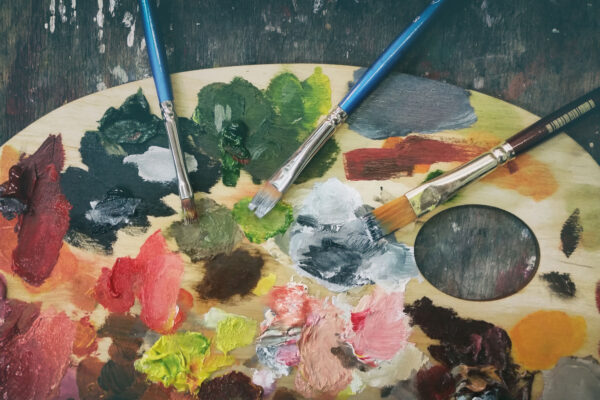Philanthropic best practices in arts and culture remain underexplored relative to other sectors of private funding. If funders are looking for best practices, it’s easy to become lost amidst varying objectives, rationales, and methodologies. For arts funders, attempting to apply financial measures such as overhead costs, or even criteria such as numbers of people served, can be frustrating and fruitless endeavors because impact can be immeasurable or delayed, innovation and creativity similarly incalculable, and aesthetic tastes subjective.
Added onto this quandary are the devastating adversities and distresses of the COVID-19 pandemic, especially on unprotected and insecure workers. Arts organizations are facing some of the most difficult challenges right now. According to an American for the Arts survey, an estimated $14.6 billion had been lost by the sector as of November 2020, with 62,000 arts workers laid off and another 50,000 furloughed. By Q3 of 2020, 63 percent of artists were unemployed, with a higher figure for Black, Indigenous, and other artists of color (69 percent versus 60 percent for white artists). Freelance musicians in particular have been hit significantly harder than those employed by large institutions, or those who are unionized. These large figures are hardly surprising given the impossibility of live performances when venues are closed (or when they are opened, with much reduced capacity).
This post does not seek to provide a philosophical argument in favor of arts funding — much has been written on this topic already. Rather, I want to make the point that right now, amidst both a catastrophic pandemic and calls for reformed funding practices (especially in support of BIPOC communities), philanthropic giving to arts and culture provides a unique opportunity for funders to reevaluate their funding, evaluation, and decision-making processes.
Arts evaluation is perhaps, by nature, subjective in more ways than other areas of grantmaking. Artistic excellence is harder to define and measure than, for example, vaccine efficacy, standardized test score improvement, or voter registration numbers. This evaluation comes on top of the already subjective nature of grantmaking writ large, as well as the fact that social networks of first-degree connections matter tremendously in who gets funded and how much they get funded. Operating in this context, for some of the wealthiest donors and foundations, a multi-million-dollar check to an elite arts organization is easier to write than a thousand-dollar check to a smaller organization doing excellent artistic, cultural, and social work.
Why is that the case? Which aspects of a funder’s grantmaking decisions contribute to that ease? The orders of magnitude in a monetary sense can be dizzying, but what can we say of impact?
One way for funders to tackle these questions is to reconsider the role of “experts” and “expertise” in their grantmaking. In my recent book, Ask the Experts: How Ford, Rockefeller, and the NEA Changed American Music, I discuss the importance of challenging our assumptions about who possesses expertise (spoiler: it’s not just those who graduate from prestigious schools) and expanding our definitions of expertise to include experiences and skills. I also argue that we should be cautious when our consultation of experts is too heavily reliant on limited social networks (e.g., the dangers of only “black tie connections” from the Met Gala), and that social capital is very unevenly distributed throughout society. The pattern of exclusive and elitist arts funding after the Second World War showed the perils of such taken-for-granted approaches.
There are fewer and fewer means of redistributing capital as it is. Social capital cannot be “taxed” and, in the United States, economic capital is taxed at much lower rates than in other OECD countries. So, while expertise certainly provides an important role in grantmaking, as it does in the arts, a broader and more inclusive understanding of expertise can lead to more equitable funding across all programs. ![]() In general, foundation boards are predominantly white and almost by definition, philanthropists represent the wealthiest class. There is much excellent work being conducted by organizations and people that funders may not know about because of limited interactions with those outside their race and class.
In general, foundation boards are predominantly white and almost by definition, philanthropists represent the wealthiest class. There is much excellent work being conducted by organizations and people that funders may not know about because of limited interactions with those outside their race and class.
If a funder chooses to support BIPOC communities and less-resourced populations across their work, then they shouldn’t forget about applying the same framework to their arts grantmaking, too. The arts are not separate from racial equity projects and missions. They do not get a free pass because they showcase some examples of beauty and excellence; they require the same scrutiny and examination of justice and inequity as all other funding. ![]()
As I write in Ask the Experts, giving to orchestras and opera companies comprises 60 percent of foundation giving to music, versus 0.82 percent to folk and indigenous music (most recent data from 2006-2015). Helicon Collaborative Co-Director Holly Sidford has pointed out that of all foundation giving to the arts, only 10 percent goes to low-income populations, communities of color, and other disadvantaged groups. And National Assembly of State Arts Agencies CEO Pam Breaux notes that grants of more than $500,000 make up 58 percent of foundation arts grants.
Quite troubling is the fact that many of the largest arts and culture institutions that have received millions of dollars in foundation grants have engaged in conscious or unconscious racism and discrimination. Brandon Keith Brown has argued the numerous ways that Western classical music acts as a white supremacist institution. Orchestras and opera companies can hide behind their aesthetic excellence (as if they hold a monopoly) while gathering up tens of millions of dollars every year. As I analyzed, between 2006 and 2015, the Metropolitan Opera received from foundations 6800 percent the amount all folk and indigenous music organizations received combined. The inequity is further magnified when we understand that private foundation giving to the not-for-profit arts in the United States is 100 times greater than federal contributions.
My point here is that not much has changed in arts funding from the mid-20th century to the present, and that limited social networks have had a deleterious effect in terms of injustice. So how might individual philanthropists and private funders address these concerns in arts funding during this pandemic?
First, determine if you’ve been using “expertise” or “expert opinion” as an exclusionary form of discrimination. Which voices are you hearing? Are they diverse — with different perspectives, approaches, and methodologies? Do they represent the communities you hope to serve?
Second, as has been pointed out by CEP in its Foundations Respond to Crisis research, in addition to reevaluating your grant application process, you should also actively establish and build relationships with nonprofit leaders and artists of color. These artists and directors can even become your future experts. The burden should not be on just the grant applicants to find you, since the least resourced are already strapped for time and energy, not to mention lack the social capital to be immediately connected with philanthropic dollars.
Third, listen to your grantees and trust that they will do the work. As Jami Duffy, executive director of Youth on Record wrote in an open letter in January, funders must release grantees from “the tight grip of applications, reporting, marketing requests, required trainings, and cohort models.” As so many have called for, there can be great value to unrestricted, multiyear funding.
Fourth, don’t focus solely on the most well-known artists or arts organizations. Through the CARES Act, the NEA was able to provide $50,000 to 846 organizations across the country. But it received applications from 3,100 eligible organizations, meaning that there are thousands more out there that did not receive federal funding, even when they qualified. The Ford Foundation under President Darren Walker has been a great leader in supporting BIPOC-led arts organizations, including its collaborative $156 million “America’s Cultural Treasures” initiative. There is a need for $10 million grants, and at the same time, there is also a need for $10,000 grants, especially as so many artists are unemployed in this pandemic.
As we prepare for the future, now is an excellent opportunity for philanthropists to rethink how they might best support the arts — as well as the ways the arts can also inform philanthropic best practices in any issue area.
Michael Sy Uy is Lecturer and Associate Director of Undergraduate Studies in the Department of Music at Harvard University. He is author of Ask the Experts: How Ford, Rockefeller, and the NEA Changed American Music (Oxford University Press, 2020).




